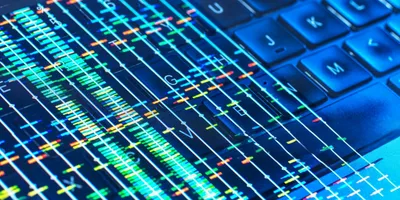A team of scientists has developed a method to illuminate the dynamic behavior of nanoparticles, which are foundational components in the creation of pharmaceuticals, electronics, and industrial and energy-conversion materials. The advance, reported in the journal Science, combines artificial intelligence with electron microscopy to render visuals of how these tiny bits of matter respond to stimuli.
"Nanoparticle-based catalytic systems have a tremendous impact on society," explains Carlos Fernandez-Granda, director of NYU's Center for Data Science and a professor of mathematics and data science, one of the paper's authors. "It is estimated that 90 percent of all manufactured products involve catalytic processes somewhere in their production chain. We have developed an artificial-intelligence method that opens a new window for the exploration of atomic-level structural dynamics in materials."
The work, which also included researchers from Arizona State University, Cornell University, and the University of Iowa, blends electron microscopy with AI to enable scientists to see the structures and movements of molecules that are one-billionth of a meter in size at an unprecedented time resolution.
"Electron microscopy can capture images at a high spatial resolution, but because of the velocity at which the atomic structure of nanoparticles changes during chemical reactions, we need to gather data at a very high speed to understand their functionality," explains Peter A. Crozier, a professor of materials science and engineering at Arizona State University and one of the paper's authors. "This results in extremely noisy measurements. We have developed an artificial-intelligence method that learns how to remove this noise -- automatically -- enabling the visualization of key atomic-level dynamics."
Observing the movement of atoms on a nanoparticle is crucial to understand functionality in industrial applications. The problem is that the atoms are barely visible in the data, so scientists cannot be sure how they are behaving -- the equivalent of tracking objects in a video taken at night with an old camera. To address this challenge, the paper's authors trained a deep neural network, AI's computational engine, that is able to "light up" the electron-microscope images, revealing the underlying atoms and their dynamic behavior.
"The nature of changes in the particle is exceptionally diverse, including fluxional periods, manifesting as rapid changes in atomic structure, particle shape, and orientation; understanding these dynamics requires new statistical tools," explains David S. Matteson, a professor and associate chair of Cornell University's Department of Statistics and Data Science, director of the National Institute of Statistical Sciences, and one of the paper's authors. "This study introduces a new statistic that utilizes topological data analysis to both quantify fluxionality and to track the stability of particles as they transition between ordered and disordered states."
The research was supported by grants from the National Science Foundation (OAC-1940263, OAC-2104105, CBET 1604971, DMR 184084, CHE 2109202, OAC-1940097, OAC-2103936, OAC-1940124, DMS-2114143).
-Note: This news release was originally published by New York University. As it has been republished, it may deviate from our style guide.










